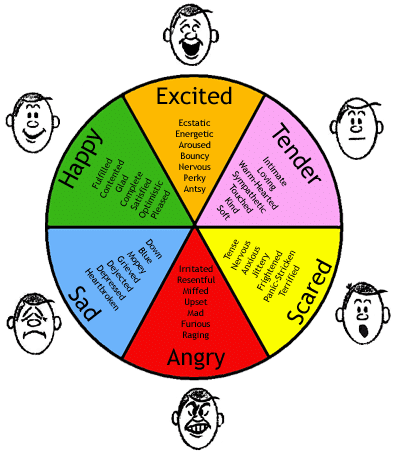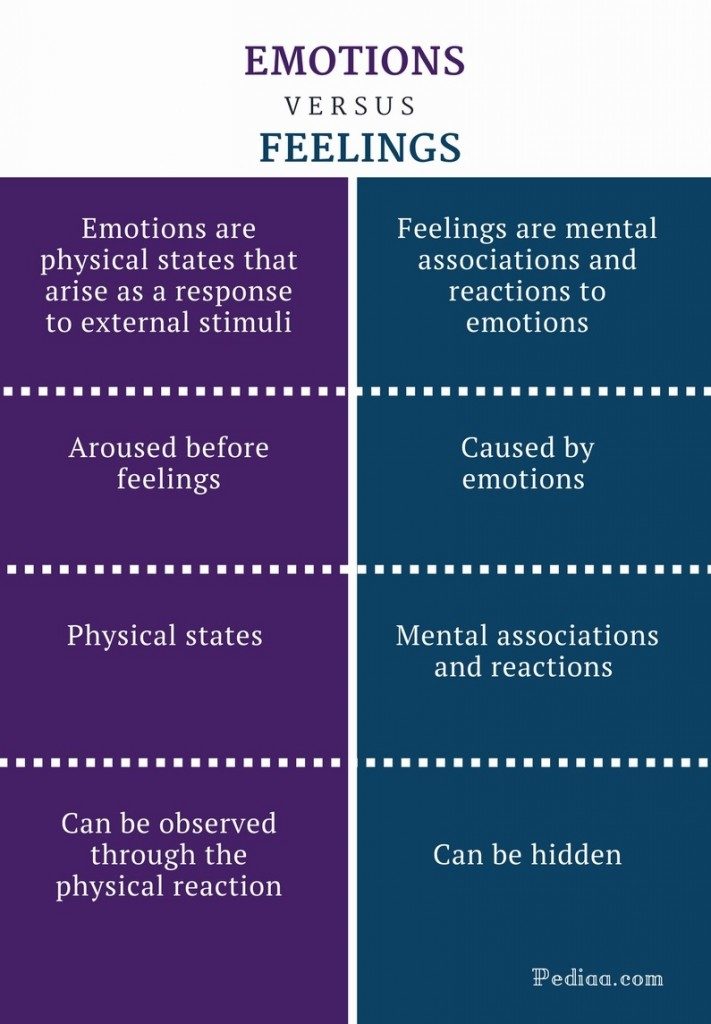Despite the fact that the two words are utilized conversely, there are particular contrasts among feelings and emotions.
Alright. Major ordeal, right?
All things considered, it sort of is a major ordeal since understanding the contrast between the two can enable you to change unfortunate practices and discover more joy and harmony in your life. Feelings and emotions are cut out of the same cloth and exceptionally interconnected yet are two altogether different things.
Emotions
Emotions are lower level reactions happening in the subcortical districts of the mind, the amygdala, and the ventromedial prefrontal cortices, making biochemical responses in your body modifying your physical state. They initially helped our species get by delivering speedy responses to risk, remunerate, and everything in the middle of their surroundings. Enthusiastic responses are coded in our qualities and keeping in mind that they do change marginally separately and relying upon conditions, are commonly generally comparative over all people and even different species. For instance, you grin and your canine sways its tail.
The amygdala assumes a job in enthusiastic excitement and directs the arrival of synapses basic for memory solidification which is the reason passionate recollections can be so a lot more grounded and longer-enduring. Emotions go before feelings, are physical, and instinctual. Since they are physical, they can be equitably estimated by the bloodstream, cerebrum movement, facial smaller scale articulations, and non-verbal communication.
Feelings
Feelings start in the neocortical locales of the cerebrum, are mental affiliations and responses to emotions, and are abstract being impacted by close to home understanding, convictions, and recollections. An inclination is a psychological depiction of what is happening in your body when you have a feeling and is the side-effect of your cerebrum seeing and allotting significance to the feeling. Feelings are the following thing that occurs in the wake of having a feeling, include subjective info, typically subliminal, and can’t be estimated absolutely.
Antonio Damasio, professor of neuroscience at The University of California and author of several books on the subject, explains it as:
Feelings are mental experiences of body states, which arise as the brain interprets emotions, themselves physical states arising from the body’s responses to external stimuli. (The order of such events is: I am threatened, experience fear, and feel horror.)
Dr.Sarah Mckay, neuroscientist, and author of the Your Brain Health blog explains it like this: Emotions play out in the theater of the body. Feelings play out in the theater of the mind.
Feelings are started by emotions and shaded by the contemplations, recollections, and pictures that have turned out to be subliminally connected with that specific feeling for you. In any case, it works the other route around as well. For instance, simply considering something undermining can trigger a passionate dread reaction. While singular emotions are brief, the feelings they bring out may continue and develop over a lifetime. Since emotions cause subliminal feelings which thusly start emotions, etc, your life can turn into an endless cycle of difficult and confounding emotions which produce negative feelings which cause progressively negative emotions without you ever truly knowing why.
While essential emotions are instinctual and basic to every one of us, the implications they take on and the feelings they brief are exclusively founded on our programming over a significant time span. Feelings are formed by an individual’s disposition and encounters and differ enormously from individual to individual and circumstance to circumstance.
Your emotions and feelings assume a ground-breaking job by the way you experience and collaborate with the world since they are the main thrust behind numerous practices, accommodating and unhelpful. It’s conceivable to respond to emotions and the feelings they inspire which are guided by oblivious dread based discernments which you may not become tied up with any longer, yet you’re carrying on with your life, settling on choices and acting as indicated by these out-dated inclinations. Living uninformed like this quite often prompts issues and misery over the long haul.
Applying the Difference to Your Life
By understanding the contrast between and getting to be mindful of your emotions and feelings, figuring out which will be which and their underlying drivers, and afterward embeddings cognizant idea pursued by purposeful activity, you can pick how you explore and experience the world. Having the option to do this implies reacting or responding which can have the effect in a quiet or disorganized life.
I don’t intend to infer that by getting to be mindful of emotions and feelings and figuring out how to react as opposed to respond that life will mysteriously wind up loaded up with rainbows and butterflies. I am proposing that by learning the distinction and changing your reasoning and conduct, that regardless of what is happening around you, you can keep up your parity, your feeling of harmony, reason, and expectation and push ahead toward your objectives.
In the holes between feeling, feeling, and acting, we as a whole have the ability to change and direct our lives to improve things. Understanding your emotions and dealing with your feelings with cognizant reasoning so they don’t commandeer your mind pursued by cognizant activity can really change your cerebrum through neuroplasticity, the deductively demonstrated capacity of your mind to change structure and capacity dependent on rehashed feeling, thought, and conduct, and transform you.





